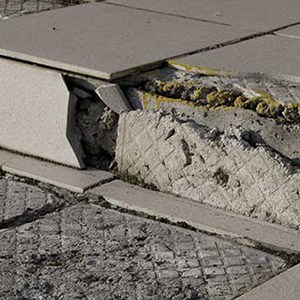 A static defect on a property has the potential to be a significant hazard, leading to various accidents and injuries. Understanding the role of a static defect in a personal injury case is essential for individuals who have suffered harm due to such conditions. In this blog post, we will delve into the concept of a static defect, its legal implications in Georgia, and how it plays a crucial role in personal injury cases. If you’ve experienced an injury due to a static defect, we, at Cohen & Sinowski, P.C., are here to support you and guide you through the legal process.
A static defect on a property has the potential to be a significant hazard, leading to various accidents and injuries. Understanding the role of a static defect in a personal injury case is essential for individuals who have suffered harm due to such conditions. In this blog post, we will delve into the concept of a static defect, its legal implications in Georgia, and how it plays a crucial role in personal injury cases. If you’ve experienced an injury due to a static defect, we, at Cohen & Sinowski, P.C., are here to support you and guide you through the legal process.
A static defect refers to any fixed or unchanging condition on a property that poses a potential danger to visitors or occupants. Examples of static defects include uneven flooring, cracked sidewalks, potholes in parking lots, broken handrails, or poorly maintained staircases. These defects can result from negligence or lack of proper maintenance by property owners or operators.
In Georgia, premises liability laws govern the responsibilities of property owners to maintain safe premises for visitors or occupants. Property owners have a legal duty of care to ensure that their premises are free from hazards. This duty extends to identifying and addressing static defects promptly. Failure to do so could lead to premises liability claims against the property owner if an injury occurs due to the defect.
To hold a property owner liable in a personal injury case involving a static defect, several factors must be established:
The property owner must owe a duty of care to the injured party. This duty typically exists when the injured party is classified as an invitee, licensee, or social guest, and their presence on the property was permitted or invited.
It is crucial to prove that the static defect existed on the property at the time of the accident. This can be achieved through photographs, witness testimonies, or expert opinions.
The injured party must show that the property owner knew or should have known about the static defect. This can be proven by demonstrating prior knowledge of the defect, previous complaints, or a lack of regular maintenance.
The injured party must establish a direct link between the static defect and their injuries. Medical records, expert opinions, and witness testimonies can provide the necessary evidence.
To strengthen a personal injury case involving a static defect, thorough documentation and compelling evidence are crucial:
Document the static defect with clear photographs and written descriptions, focusing on the exact location, size, and nature of the defect.
Gather statements from witnesses who can testify to the existence of the defect and its potential danger.
Consult experts, such as engineers or architects, who can offer professional opinions regarding the defect’s hazardous nature and the property owner’s negligence.
In personal injury cases involving static defects, the injured party may be eligible for various types of compensation, including:
Reimbursement for medical bills, hospital stays, surgeries, medications, and ongoing treatment.
Compensation for lost income and potential loss of future earning capacity due to the injury.
Damages awarded for physical and emotional pain and suffering caused by the accident and subsequent injuries.
Reimbursement for any personal property damaged during the incident.
The specific compensation awarded will depend on the circumstances and extent of the injuries suffered.
It is crucial to be aware of Georgia’s statute of limitations to ensure that your personal injury claim is filed within the specified timeframe. In most cases, the statute of limitations for personal injury claims involving static defects is two years from the date of the accident. However, certain exceptions may apply, which is why seeking legal advice without delay is paramount.
 If you or a loved one has suffered injuries due to a static defect on a property, understanding the legal implications and seeking legal representation is crucial to protect your rights. At Cohen & Sinowski, P.C., we have the knowledge, experience, and compassion necessary to navigate the complex legal process on your behalf. Contact our dedicated team today for a free consultation and let us support you in seeking the compensation and justice you deserve.
If you or a loved one has suffered injuries due to a static defect on a property, understanding the legal implications and seeking legal representation is crucial to protect your rights. At Cohen & Sinowski, P.C., we have the knowledge, experience, and compassion necessary to navigate the complex legal process on your behalf. Contact our dedicated team today for a free consultation and let us support you in seeking the compensation and justice you deserve.
Contact Cohen & Sinowski, P.C. today for a free consultation. Our compassionate and experienced attorneys are ready to assist you with your personal injury case involving a static defect. Let us fight for your rights and help you obtain the compensation you deserve.